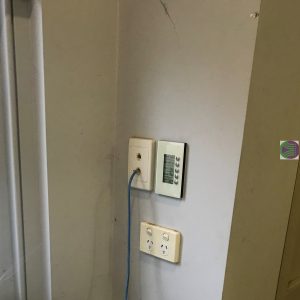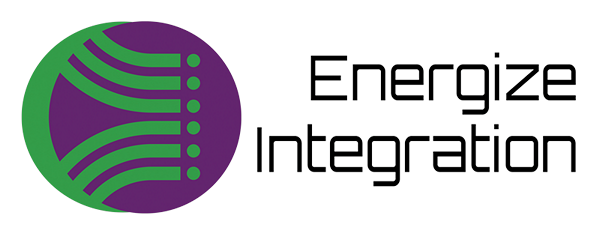Secrets of Smart Home Automation Troubleshooting
Are you experiencing issues with your smart home automation system? Don’t worry; you’re not alone. As technology continues to advance, so does the complexity of our smart homes. In this blog post, we will explore the most common smart home issues and provide you with troubleshooting tips to get your system back on track.
Please note that if you have recently bought or are looking to buy an existing home with smart home integration, this list may help troubleshooting. The information in this list is generic in nature and the best way to troubleshoot a home automation system you’ve ‘inherited’ is to contact an experienced
1. Connectivity Problems
One of the most common issues faced by smart homeowners is connectivity problems. When your devices fail to communicate with each other or with the central control system, it can be frustrating. One possible cause is a weak Wi-Fi signal. Ensure that your router is in a central location and consider installing a Wi-Fi range extender to improve signal strength.
2. Device Compatibility
Smart homes often consist of various devices from different manufacturers. Sometimes, these devices may not be compatible with each other, resulting in a malfunctioning system. Before purchasing any smart home devices, ensure they are compatible with your existing system.
In addition to compatibility between devices, it’s also essential to ensure that your devices are compatible with your chosen smart home platform. Different platforms have different requirements and may not support all devices. Research and choose a platform that works well with your existing devices and meets your specific needs.
3. Software Updates
Just like any other technology, smart home devices require regular software updates to ensure optimal performance. Neglecting these updates can lead to compatibility issues and security vulnerabilities. Make it a habit to check for and install software updates for all your smart devices regularly.
Keep in mind that software updates may not always be automatic. Some devices require manual updates, which you can typically do through the device’s dedicated app or the manufacturer’s website. Set reminders to check for updates periodically and follow the instructions provided by the manufacturer for a smooth update process.
4. Power Outages
Power outages can disrupt the functioning of your smart home automation system. While most devices have built-in battery backups, it’s essential to ensure that these batteries are in good working condition. Replace them if necessary to avoid any interruptions in your smart home’s operation.
In addition to battery backups, consider investing in a surge protector to protect your devices from power surges when the electricity comes back on. Power surges can damage electronic devices, so using surge protectors can provide an extra layer of protection.
5. Security Concerns
With the increasing prevalence of smart home technology, security has become a significant concern. Ensure that your smart home devices are protected with strong passwords and enable two-factor authentication whenever possible. Regularly review the security settings of your smart devices and update them as needed to keep your home secure.
It’s also important to keep your smart home network secure. Change the default password on your router and make sure it’s a strong, unique password. Regularly check for firmware updates for your router to ensure it has the latest security patches.

6. System Integration
Integrating all your smart home devices into a cohesive system can be challenging. If you’re facing difficulties in setting up or integrating your devices, consult with experts in smart home automation. They can provide you with valuable guidance and ensure that your devices work seamlessly together.
When seeking expert assistance, it’s important to choose professionals who have experience with the specific devices and platforms you’re using. They can help you troubleshoot any compatibility issues and recommend the best practices for integrating your devices.
7. Device Malfunctions
Sometimes, individual devices within your smart home system may malfunction. If you encounter this issue, try resetting the device or contacting the manufacturer’s support for troubleshooting assistance. If the problem persists, consider replacing the faulty device.
To prevent device malfunctions, it’s important to handle your smart devices with care and follow the manufacturer’s instructions for installation and maintenance. Avoid exposing them to extreme temperatures, moisture, or physical damage. Regularly clean your devices to remove dust and debris that can affect their performance.
8. App Compatibility
Many smart home devices come with their dedicated apps for control and customisation. However, using multiple apps for different devices can be overwhelming. Look for devices that are compatible with popular smart home platforms like C-Bus Automation or Wiser by Clipsal. This integration will allow you to control all your devices conveniently from a single app.
In addition to app compatibility, consider the user interface and ease of use when choosing smart home devices. A well-designed and intuitive app can significantly enhance your smart home experience. Read user reviews and research the app’s features before making a purchase.
9. Lack of Expertise
Smart home automation can be complex, especially for those who are new to the technology. If you’re struggling to troubleshoot your smart home issues, don’t hesitate to reach out to experts in the field. They have the experience and knowledge to diagnose and fix any problems you may encounter.
When discussing your smart home issues with experts, be prepared to provide them with detailed information about your system and the specific problems you’re facing. This will help them understand your setup better and provide more accurate solutions. Take advantage of their expertise and ask questions to deepen your understanding of your smart home system.
10. Interference Issues
Interference from other devices can disrupt the communication between your smart home devices. Keep your smart devices away from appliances that emit electromagnetic interference, such as microwaves or cordless phones. This step will help ensure a stable and reliable connection between your devices.
In addition to minimising interference from other devices, consider optimizing your Wi-Fi network for better performance. Place your router in a central location, away from walls and other obstructions. Reduce the distance between your devices and the router to improve signal strength. If necessary, consider upgrading to a more advanced router or using a mesh Wi-Fi system to eliminate dead zones in your home.
11. Environmental Factors
Extreme temperatures or high humidity can affect the performance of your smart home devices. Ensure that your smart devices are installed in suitable environments and follow the manufacturer’s recommendations for optimal operation.
For example, avoid installing smart devices in areas exposed to direct sunlight or near sources of heat. In humid environments, consider using devices with waterproof or moisture-resistant features. Regularly check for signs of damage or wear and tear on your devices and address any issues promptly.
12. Outdated Technology
As technology evolves, older smart home devices may become outdated and incompatible with newer systems. If you’re experiencing issues with outdated devices, consider upgrading to the latest technology to ensure compatibility and access to new features.
In conclusion, smart home automation troubleshooting can be challenging, but with the right knowledge and resources, you can overcome any issues you encounter. Remember to conduct thorough research before purchasing any smart home devices and consult with experts if needed. By following these troubleshooting tips, you can enjoy a seamless and efficient smart home experience.
If you’re facing any smart home issues or need assistance with your automation system, don’t hesitate to contact Energize Integration. Our experts are ready to help you navigate the world of smart home automation and ensure that your system runs smoothly. Contact us today for a personalised consultation.
Disclaimer: This blog post is for informational purposes only. Always consult with professionals for accurate diagnosis and solutions to your specific smart home issues.
